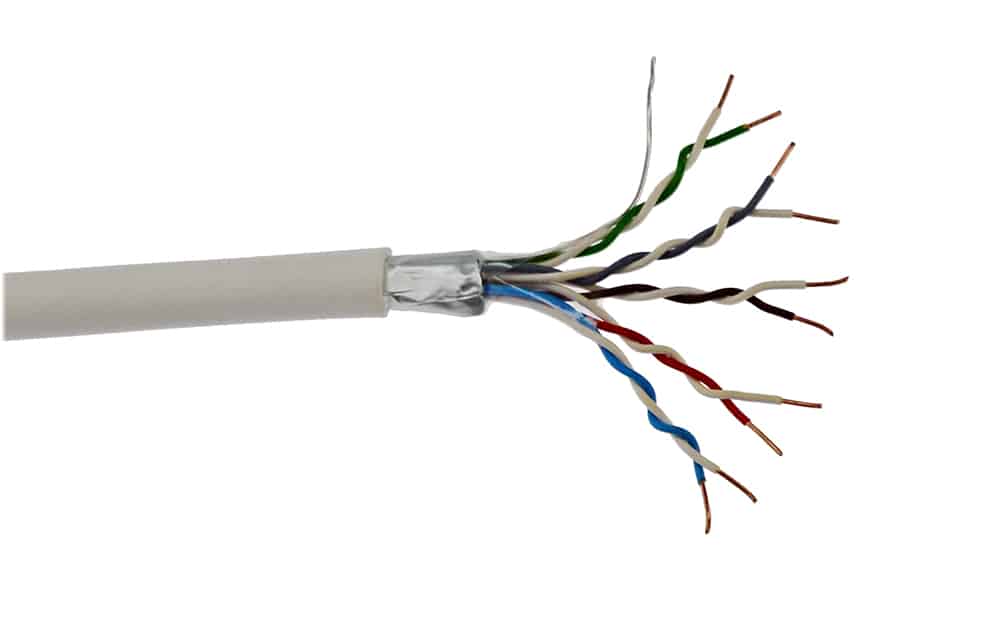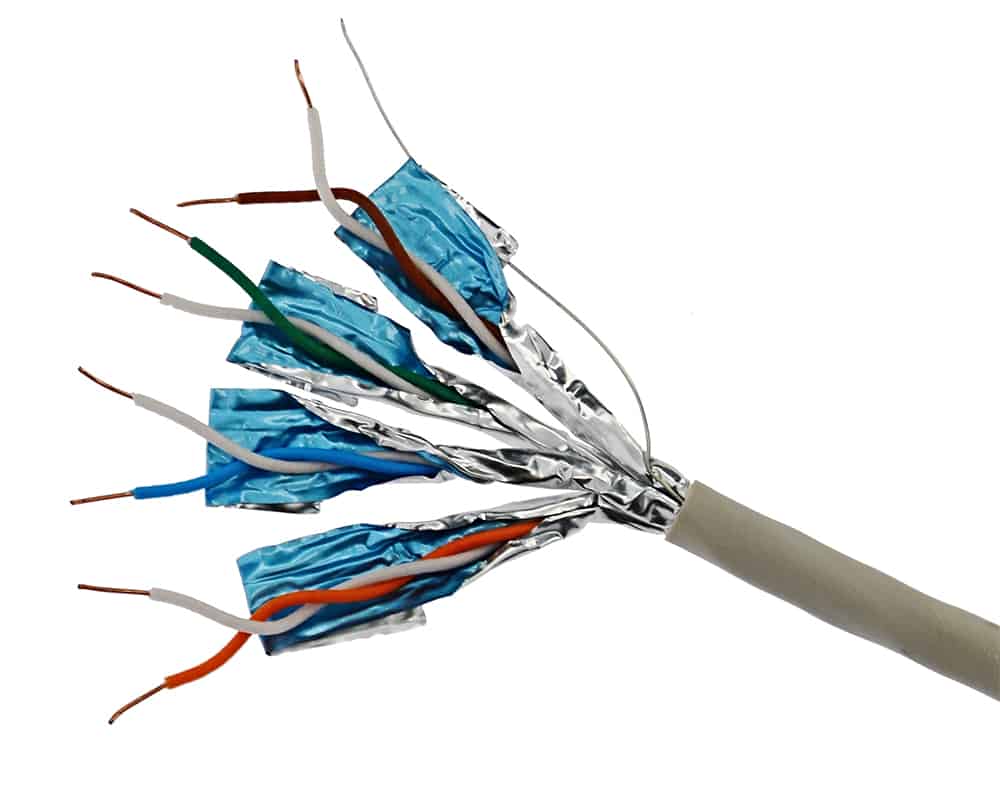As a buyer, your two main options when looking to buy Ethernet cables are Shielded Twisted Pair (STP) and Unshielded Twisted Pair (UTP). The cable you end up choosing will have a huge impact on the cost and eventual performance of the network it is used to set up. For those with little knowledge of the differences between these two options, making a final decision might be somewhat of a challenge.
The main difference between Unshielded Twisted Pair and Shielded Twisted Pair lies in their construction. The hidden metal coating that is included in the construction of UTP cables is not present in their STP counterparts. This important distinguishing factor leads to a variety of differences between both options that affect each cable’s suitability to various applications with regard to cost, installation requirements and performance, among others.
However, even with the above difference, it is worth noting that both STP and UTP cables support the same maximum length and capabilities.
Table of Contents
Definition of Unshielded Twisted Pair (UTP)
Made up of 2 to 1800 unshielded twisted pairs wrapped in a protective outer jacket, Unshielded Twisted Pair is a 100ohm copper cable. While the cable’s twisted design gives it some level of protection from EMI and noise, its unshielded construction means that it is not protected against interference from electromagnetic signals.
UTP cable is much lighter and more flexible due to the absence of metallic shielding in its structure. This makes it a better option in applications where there is no/minimal electromagnetic interference.
Types Of UTP Cables

Solid Conductor UTP Cable
A single solid copper wire is used as the conductor in solid conductor UTP cables. Due to their solid nature, working with these wires tends to be much easier. Furthermore, based on their larger diameter, these cables are more resistant to high-frequency interference and substantially lower DC resistance. As a result, solid conductor UTP cables can support higher transmission speeds and longer maximum transmission lengths than stranded conductor UTP cables.
Stranded Conductor UTP Cable
The conductor inside every twisted pair in a stranded UTP cable is made up of a bundle of copper wires with smaller gauges. In a stranded UTP cable, a single wire at the center of the bundle is surrounded by around six to eight wires. The cable’s name comes from the process of stranding, which refers to the process of helically wrapping the outer wires around the center wire, to create one bundle. All the wires within this bundle act as a single conductor.
Stranding helps boost the flexibility of the cable, while also offering an added level of protection.
However, stranded cables normally have a smaller conducting area – owing to the smaller diameters of each individual wire strand – than solid conductor cables even though each stranded bundle normally has the same diameter as that of the conductor in a solid UTP cable.
Definition of Shielded Twisted Pair (STP)

Shielded Twisted Pair cable, as the name suggests includes metallic shielding in its construction. A metal shield, made up of copper tape and a conducting polymer layer or aluminum – or sometimes copper – braid is wrapped around each twisted pair in an STP cable. Depending on the cable, the shielding can be found around the all the pairs, or on each twisted pair in a cable.
Some STP cables come with shielding around each twisted pair and also around the entire bundle, for added performance.
Due to the use of shielding materials in their construction, STP cables tend to be more expensive than their unshielded counterparts. The installation of these cables also tends to be more demanding due to the rigid and fragile nature of their metal shield.
Types of STP Shields
Braided Shield
This type of shielding uses tinned or bare copper wires woven into a mesh. Depending on how tight the weave is, braided shielding may offer anywhere from 70 to 80 percent coverage. 70 percent coverage is normally considered to be enough for most applications. One of the main advantages of this type of shielding is that the braided construction enables easier attachment to a connector through soldering or crimping.
Foiled Shield
This type of shielding on the other hand uses a thin layer of aluminum foil to provide the necessary protection. Unlike braided shielding, this type of shielding offers 100 percent coverage around the twisted pairs or entire cable. However, attaching this type of shielding to a connector is more challenging given the fragile nature of the thin aluminum foil.
It is worth noting that the braided shield is considered to be more effective at shielding thanks to the braid’s elevated noise conducting capabilities and copper’s enhanced conductivity over aluminum.
What is Crosstalk/Noise?
Also referred to as noise or coupling, crosstalk can be defined as the interference that is caused by electromagnetic (EM) signals interacting with another electronic signal. In cabling applications, twisted cable pairs normally create electromagnetic fields that interact with each other causing induced interference in adjacent pairs. The electromagnetic signal that causes the interference is referred to the aggressor, while the signal that is interrupted or disturbed is referred to as the victim.
In general, crosstalk/noise has a negative effect on the stability of the signal being transmitted. One of the most effective ways of protecting signals, and preventing interference, is through the use of shielding. Shielding helps prevent interference in two different ways. For starters, shielding can be used to transmit the interference to ground through conduction. Secondly, shielding helps bounce interfering signals away from the protected twisted pairs/cables.
Conclusion
Due to the unique construction of each option, there are many differences between STP (Shielded Twisted Pair) and UTP (Unshielded Twisted Pair). Picking the right option (between STP and UTP) will affect the stability and reliability of the network it is used to set up, as well as the equipment therein. As such, it is essential that you have a good idea of the differences that separate these two options, as well as their suitability to different applications, before making your final pick.